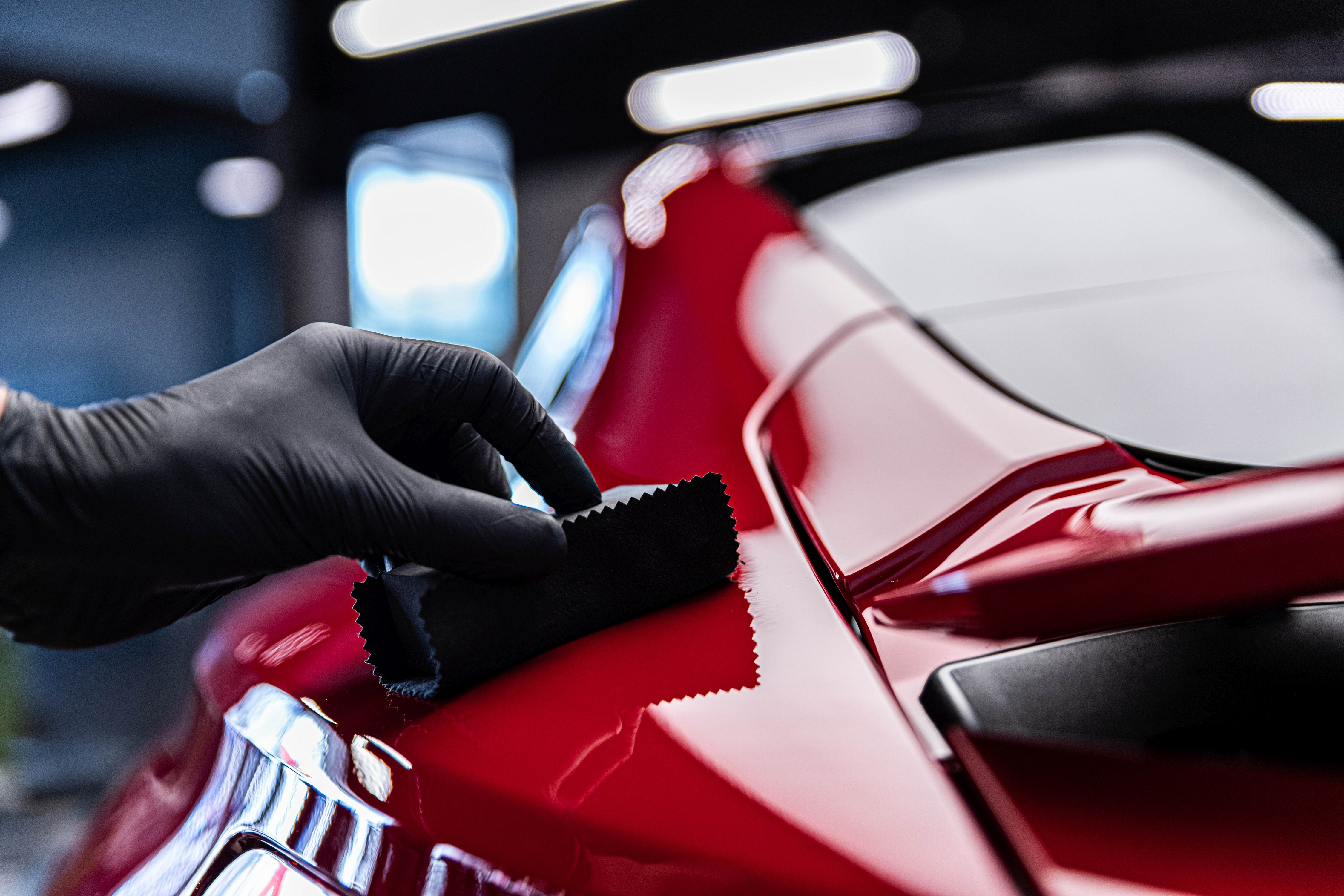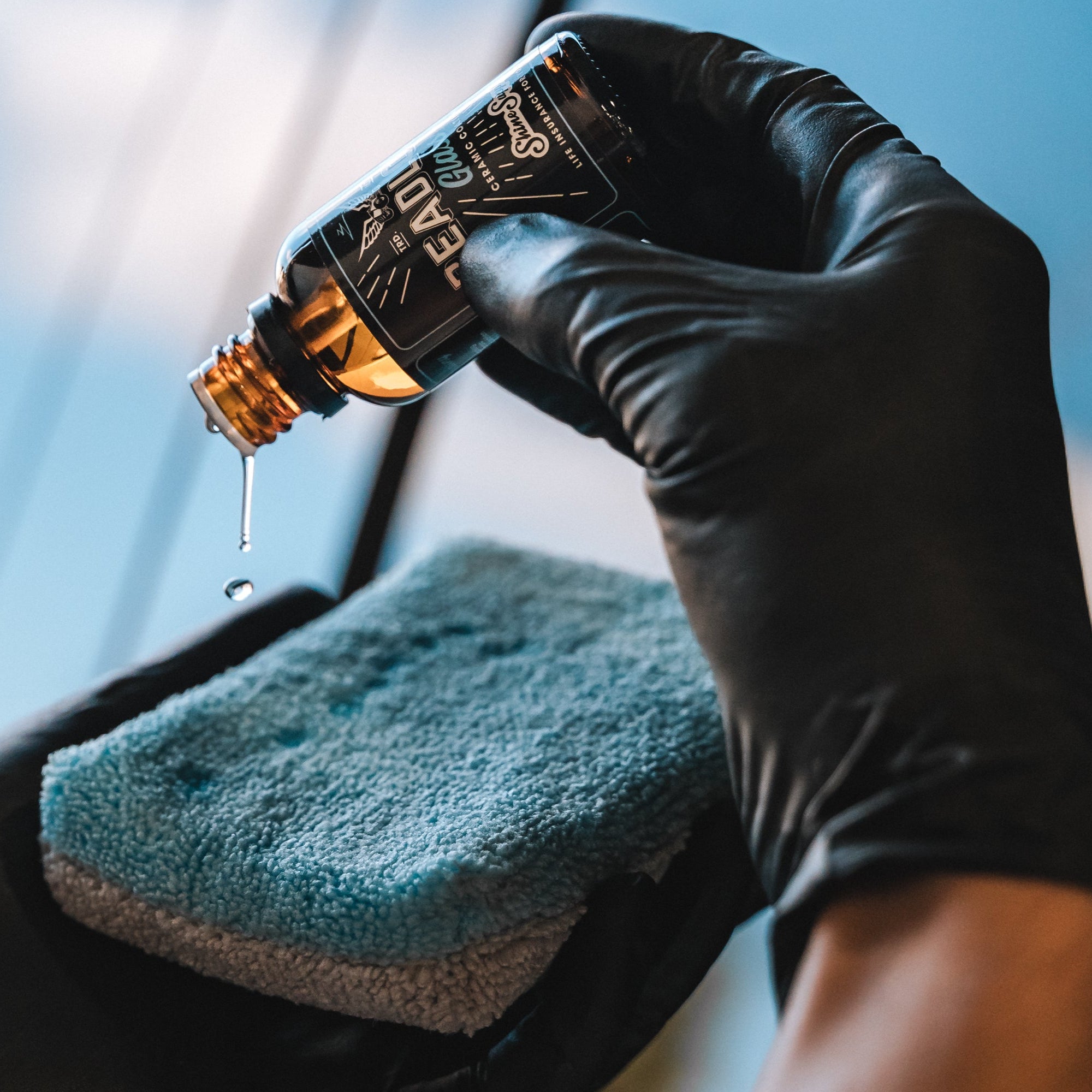Checking out the Scientific Research Behind Car Ceramic Coating and Its Safety Properties
The scientific research of car ceramic coating offers an interesting research study in sophisticated automobile defense. Made up mainly of silicon dioxide and polymers, these coverings develop a durable bond with vehicle paint. This communication improves resilience versus environmental hazards while using hydrophobic advantages. Nevertheless, the complexities of exactly how these layers job and their long-term advantages remain less comprehended. Unloading these information exposes why ceramic coatings are ending up being a favored option for automobile care
What Is Ceramic Coating?
Ceramic coating is a liquid polymer that chemically bonds to the surface of a vehicle's paint. This advanced protective layer improves durability and uses superior resistance to environmental elements. Unlike typical wax or sealants, which offer temporary defense, ceramic layers produce a durable shield that can hold up against severe problems such as UV rays, acidic pollutants, and severe climate. When applied appropriately, the coating develops a hydrophobic surface, creating water to bead and slide off, which aids in keeping the car's tidiness. Additionally, it uses improved gloss and depth to the paint, making the automobile show up more refined and vibrant. The application process usually involves complete surface prep work, including cleansing and polishing, to ensure peak bonding. Consequently, ceramic finishings are becoming progressively prominent among car lovers and those seeking to secure their financial investments, assuring to keep the car's visual appeal while reducing the regularity of maintenance.
The Make-up of Ceramic Coatings
The complex formulation of ceramic layers mainly contains silicon dioxide (SiO2), which is stemmed from natural resources like quartz and sand. This essential component provides the foundation for the coating's durability and protective high qualities. Along with SiO2, ceramic coverings usually include various polymers and additives that boost attachment, flexibility, and resistance to environmental aspects. These substances function synergistically to create a robust obstacle versus impurities such as dirt, chemicals, and UV rays.Furthermore, some formulations incorporate titanium dioxide (TiO2) or various other nanomaterials, which can enhance the coating's hydrophobic residential properties, causing improved water repellency. The precise structure can vary substantially amongst suppliers, affecting performance and longevity. Inevitably, the mix of these elements culminates in a safety layer that not only improves the aesthetic appeal of automobiles but additionally serves to lengthen their life-span by securing the surface from possible damage.
Just How Ceramic Coatings Job
Comprehending how ceramic finishings work entails exploring their chemical structure, which adds to their protective top qualities. The application procedure is vital for attaining perfect results, while longevity and sturdiness elements identify the coating's performance with time. With each other, these components highlight the advantages and efficiency of ceramic finishings for automobile protection.
Chemical Make-up Explained
While lots of car owners seek long-lasting defense for their automobiles, the chemical composition of ceramic layers plays a critical duty in their performance. These finishes mainly include silicon dioxide (SiO2), which is acquired from all-natural minerals. This substance develops a solid bond with the automobile's paint, creating a long lasting, protective layer. In addition, numerous ceramic finishes include titanium dioxide (TiO2), enhancing their hydrophobic buildings and resistance to UV rays. The existence of polysiloxanes can even more boost flexibility and durability. With each other, these elements add to the coating's capacity to ward off water, dust, and contaminants, while additionally providing a high-gloss coating. Understanding this chemical foundation aids car proprietors appreciate the robust defense offered by ceramic finishes.
Application Refine Summary
Using ceramic layers involves a precise procedure that guarantees perfect bonding and defense for the vehicle's surface. At first, thorough cleaning and decontamination of the car's outside are executed to get rid of dirt, grime, and previous waxes. This step verifies that the surface is devoid of contaminations that might prevent adhesion. Following this, the paint is typically polished to enhance clearness and remove any flaws. When prepared, the ceramic coating is used in tiny areas making use of an applicator pad, permitting for consistent insurance coverage. The coating is after that delegated cure, creating a strong chemical bond with the surface area. Appropriate treating times and problems are vital, as they confirm the coating accomplishes its maximum efficiency and protective qualities.
Durability and Longevity Variables
Ceramic layers are made to provide long-lasting protection through their advanced chemical composition, which develops a durable barrier against ecological pollutants. The longevity of these finishings is influenced by factors such as the density of the application, the top quality of the product, and the problems under which the automobile is exposed. Top quality ceramic finishes can last several years, withstanding scrapes, UV rays, and chemical discolorations. Appropriate maintenance, including normal washing and routine reapplication, can better improve longevity. Additionally, environmental variables like environment and direct exposure to pollutants can impact the life-span of the coating. Generally, when applied and kept appropriately, ceramic coatings use extraordinary sturdiness, making them a preferred option for car lovers seeking to protect their vehicle's look.
Hydrophobic Qualities and Water Repellency
Hydrophobic residential or commercial properties are a hallmark of top quality car ceramic finishes, significantly boosting the car's surface area efficiency. These finishings develop a molecular bond with the car's paint, causing a surface that wards off water successfully. When water comes into contact with a ceramic-coated surface, it grains up and see this rolls off, decreasing the quantity of fluid that remains on the paint. This behavior not just adds to a visually pleasing appearance but also decreases the build-up of impurities such as dust, crud, and road salts.The improved water repellency causes less complicated cleansing and upkeep, as much less initiative is required to remove undesirable materials. On top of that, the hydrophobic nature of ceramic layers helps in avoiding water areas, which can mar the coating of uncoated surfaces. In general, the incorporation of hydrophobic homes in ceramic finishings learn this here now plays a crucial function in maintaining the car's beautiful look while simplifying maintenance.
Defense Versus Scratches and UV Damages
Car ceramic finishings provide significant protection against scratches and UV damage. The scratch resistance mechanism creates a resilient layer that takes in effects, while the UV protecting benefits aid preserve the vehicle's paint honesty over time. With each other, these features contribute to a longer-lasting and visually appealing coating.
Damage Resistance System
Using advanced innovation, ceramic layers supply a robust guard against scratches and UV damage, improving the longevity and look of car surfaces. The scratch resistance mechanism of these layers is credited to their unique molecular framework, which forms a sturdy bond with the car's paint. This bond creates a hard, safety layer that can soak up effects and stand up to abrasions. Furthermore, the smooth surface area of the coating decreases rubbing, making it challenging for pollutants to stick and trigger scrapes. The chemical composition of ceramic coverings usually includes nanoparticles that enhance the protective layer, more enhancing its strength. Cars treated with ceramic coverings show substantially improved scratch resistance contrasted to standard wax or sealants, ensuring an excellent surface over time.
UV Protecting Conveniences
The safety high qualities of ceramic finishes prolong past scrape resistance to include considerable UV securing advantages. These finishings develop a robust obstacle that mirrors unsafe ultraviolet rays, securing the lorry's paint and underlying products. Prolonged direct exposure to UV radiation can result in fading, oxidation, and degeneration of the paint surface. By incorporating ceramic coverings, vehicle proprietors can effectively alleviate these risks, preserving the visual allure and honesty of their vehicles. Furthermore, the UV blocking homes add to boosted longevity, decreasing the regularity of painting and maintenance. Ultimately, the combination of ceramic layers uses a detailed service for protecting cars from the damaging impacts of sun direct exposure, making certain a sustained, vivid look in time.
The Long life and Maintenance of Ceramic Coatings

Regularly Asked Inquiries
Can Ceramic Coating Be Applied to Any Type Of Sort Of Car?
Ceramic coating can be put on different kinds of cars, consisting of cars and trucks, trucks, and motorcycles. Nevertheless, surface area prep work and compatibility with certain materials are essential for suitable adhesion and efficiency of the coating.
Just How Much Does Ceramic Coating Commonly Price?
Ceramic coating normally sets you back between $500 and $2,000, depending on elements such as vehicle dimension, coating quality, and professional application. The investment can give resilient protection and boost the vehicle's appearance with time.

Is Specialist Application Essential for Finest Results?
The requirement of professional application frequently depends on preferred results. Specialists commonly assure appropriate surface preparation and application strategies, causing excellent bonding and long life of the coating, which may be testing for inexperienced people to achieve.
Can Porcelain Coatings Be Removed or Fixed?
Ceramic coverings can be gotten rid of or repaired, though the procedure might need specific solvents or strategies - Ceramic Coating Newark. Appropriate elimination is important to avoid damages to the underlying surface area, highlighting the significance of professional support for ideal results
Just How Does Ceramic Coating Compare to Conventional Wax?
The comparison in between ceramic coating and standard wax exposes that ceramic finishings supply remarkable durability, boosted security against ecological contaminants, and longer-lasting luster, while wax calls for extra regular application and provides less total resistance to damage.